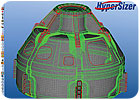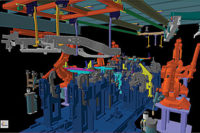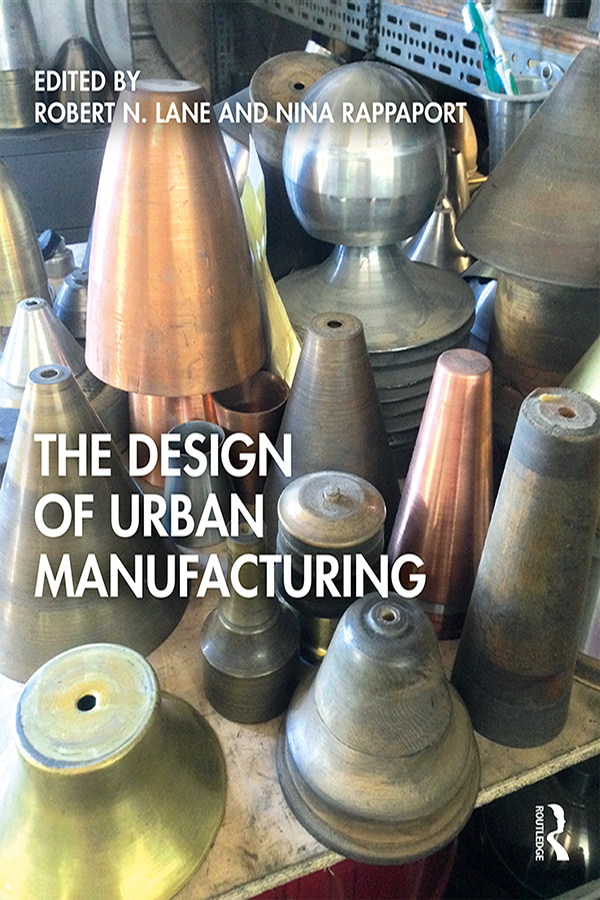
NASA used the HyperSizer
software to predict the Composite Crew Module’s successful response to
simulated flight condition load testing. Graphic courtesy Collier Research
Corp.
In late 2009, the NASA Engineering and Safety Center completed a series of critical, full-scale, physical tests to help predict how the Composite Crew Module (CCM) would perform under simulated flight conditions. Performed at Langley Research Center, the tests focused on material tradeoffs between metals and composites in space structures.
The CCM was constructed of honeycomb sandwich and solid laminate composites and developed as an all-composite alternative for the flight crew module Orion, which was part of NASA’s Constellation program to send astronauts to the Moon or Mars. Although the Constellation program was cancelled in early 2010, the successful outcome of the tests is considered a major milestone in the design of human-rated spacecraft-one that points towards increased use of lightweight composites in space vehicles.
“The CCM is an alternative for the metallic crew module, but it has also represented an opportunity for the NASA family to get up the curve on experience with composites,” says Mike Kirsch, manager of the now-defunct CCM project. “Our analytical models predicted the response very well, and now we’re much better informed to make good material tradeoffs for future spacecraft.”
To create those analytical models, NASA used HyperSizer, a structural sizing and composite analysis software from Collier Research Corp. HyperSizer was used throughout the almost three-year project to optimize the design, weight and manufacturability of the CCM. HyperSizer also was the first NASA software to be licensed and commercialized as part of the agency’s effort to transfer technology to U.S. business and industry.
The software works in a feedback loop with finite element analysis to automatically search for solutions that minimize weight and maximize manufacturability of large, complex, composite or metal structures. Although it can also be used on metallic structures, the software is particularly applicable to complex composite materials, providing the capability to optimize the architecture of large structures-like space vehicles, aircraft, railcars, ships or even wind turbine blades-ply-by-ply and element-by-element.
In the case of the CCM, the software guided design and manufacturing decisions throughout the product development process. “HyperSizer gave us a view into what the physics were doing,” says Kirsch. “We could zoom in on the architecture, refine the design, trade solutions and evaluate mass and manufacturability very quickly.” The software was also the primary communications tool used to display analytical results during five different technical reviews with industry and agency experts.
Load testing of the CCM involved blanketing the vehicle with 280 linear strain gauges-fiber optic cables generating about 3,000 channels of data-and 80 acoustic sensors that listened for fiber breaks in the composite lay-ups. The module successfully withstood tests of loads applied to the structure to simulate launch abort and parachute deployment.
The module also withstood the internal pressure test, which required the CCM to withstand twice standard atmosphere pressure (31 psi) in order to meet the NASA safety factor of two.
“I’ve been working with composites for 25 years and the CCM is the most complicated structure I’ve ever dealt with,” says Jim Jeans, who was chief architect for NASA on the project. “The sizing and strain predictions all held up as the software predicted.”
For more information on weight-minimization software, call 757-825-0000 or visit www.hypersizer.com.




